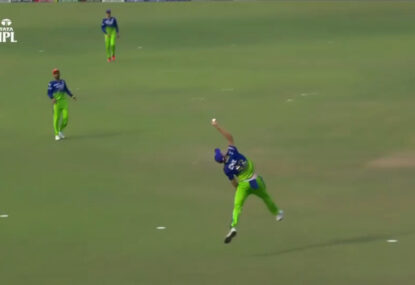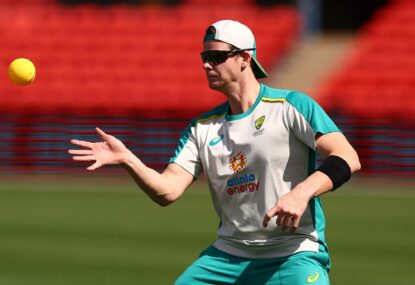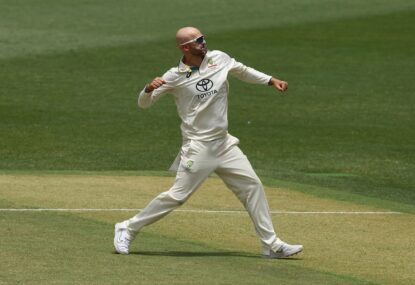While little should be read into the results of an understrength Australian side in the West Indies, the T20 series reinforced a pre-existing problem: the inability to chase a target.
In the first match of the West Indies series, a target of 146 was too overwhelming.
A Mitchell Marsh half century and quick-fire 33 from Matthew Wade put Australia in a winning position. Yet they managed to lose.
Last summer, Australia butchered a chase of 162 against India, after failing to chase a target of 159 in Port Elizabeth earlier in the year.
In South Africa, they needed 75 from the final ten overs, with nine wickets in hand. David Warner batted for the entire innings, yet Australia could only muster a total of 146.
All up, they have lost in eight of their last ten run chases, many of which involved a much stronger Australian XI than those fielded in Saint Lucia.
Despite a clear inability to chase, Australia have elected to bowl first on six of the last ten occasions they have won the toss – winning four tosses in New Zealand and four in the Caribbean. In each series, they bowled first on the first two occasions, before batting first for the next two.
The default position appears to be bowling first – only after consecutive failures have they decided on a change.
Perhaps they are trying to improve an area of weakness before it exposes them in a cut-throat World Cup match. This is justified, as they clearly need to improve in run chases, but come the tournament proper, they should be looking to bat first.
Australia have scored 180-plus in seven of their last 11 innings when batting first. These seven innings include two scores of over 200 and three scores in the 190s.
Like any team, they don’t always fire – two scores in the 140s and two in the 150s are testament to that – but Australia are statistically a powerful unit when batting first. Of these 11 matches, seven have been victories, a far greater rate of success than bowling first.
Selection even dictates that Australia should bat first. Aaron Finch averages 50.06 (strike rate of 157.65) in the first innings of T20 internationals, compared to 27.59 (SR 140.82) in run chases. His numbers are strong regardless, but clearly much better when batting first.
Finch specialises in clearing the field in the powerplay and is at his best when he can bat with freedom, without pressure in the form of a target.
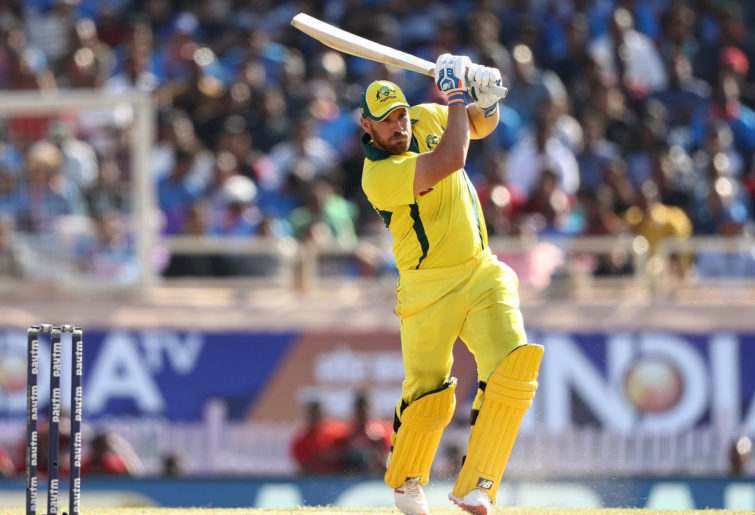
Aaron Finch. (Photo by Robert Cianflone/Getty Images)
For Wade, the contrast is even more stark. In the last two BBL seasons, his scores batting first are 61, 16, 66, 56, 130*, and 86. Batting first suits him perfectly. Like Finch, he loves to hit boundaries when the field is up, capitalising on anything inaccurate from the bowling side.
Yet when chasing, Wade struggles. The pressure of having to score at a certain rate draws rash shots. Where he specifically targets inaccurate bowling when batting first, he is far more likely to choose the wrong ball in run chases, where his batting becomes panicky and irrational.
In the last two BBL seasons, Wade has posted scores of 3, 5, 6, 14, and 11 in run chases. In internationals he averages 32.07 (SR 143.29) batting first, and 12.25 (SR 110.11) in chases. The only three scores of 50-plus by Australian wicketkeepers in T20 international history were courtesy of Wade opening the batting in the first innings.
While Wade is clearly better when he bats in the top three, his performances down the order are far less disastrous when batting first. Outside the top three, he has 96 runs at 32 (SR 126.31) when batting first, compared to 113 runs at 10.27 (SR 89.68) in run chases. The sample size isn’t massive, but the difference is. If Australia want to invest in Wade, and it appears they do, then they also need to invest in a bat-first strategy, regardless of where he bats.
Australia’s one-paced bulldozer of a middle order is far less fragile in the first innings. The openers, whether Finch, Wade or Warner, invariably tee off, before Glenn Maxwell capitalises on the platform set. By the time the others have to bat, there are often few overs remaining, meaning they just need to keep swinging.
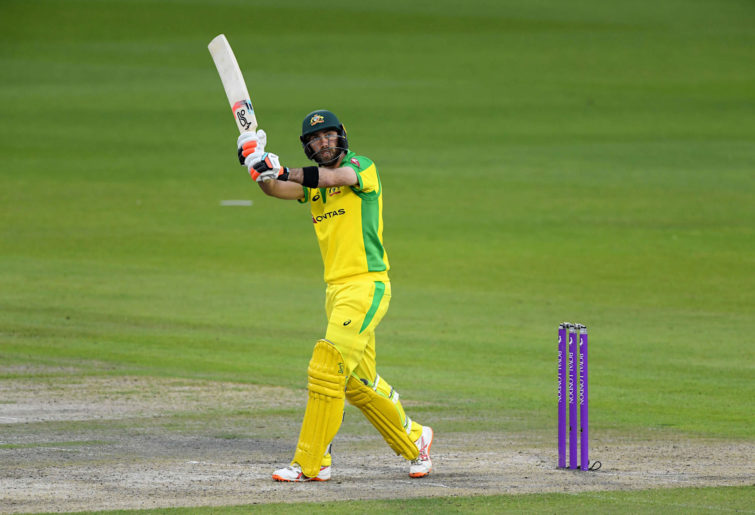
Glenn Maxwell. (Photo by Stu Forster/Getty Images for ECB)
In run chases, Finch and Wade are statistically less likely to lay a platform and the known target often requires the middle order to be more circumspect, and manipulate the field between boundaries. People often bemoan Australia’s failure to find players to bat at number five and six – they’re absolutely correct in their criticism, with the shortcomings exposed more prominently in run chases.
Not every Australian batsman needs to bat first – Maxwell, Warner, Marsh and Steve Smith have similar numbers regardless, while Dan Christian (if selected) has proven an ability to find the boundary in an array of situations in franchise cricket. But statistically everyone either has no preference, or would rather bat first, while the batting unit as a whole functions considerably better in the first innings.
The other side of the coin is of course the bowlers. Australia is not truly a bat-first team if the bowlers hate defending totals. In Australia’s case, the first choice bowling line-up loves to bowl second.
Ashton Agar’s numbers in second innings are barely believable, courtesy of five and six-wicket hauls against South Africa and New Zealand respectively. Agar has 21 wickets at 8.52 (economy of 5.42) in run chases, compared to 18 wickets at 34.44 (ECON 7.56).
The same is true of his spin-twin Adam Zampa, who has 26 wickets at 17.96 (ECON 6.98) in run chases and 21 wickets at 31 (ECON 7.07) in the first innings, while key seamers Mitchell Starc (19 wickets at 14.78, ECON 6.53) and Pat Cummins (14 wickets at 17.5, ECON 6.62) also prefer bowling in run chases.
These four will likely make up Australia’s attack at the World Cup, with Marsh’s bowling in the Caribbean justifying the decision to select just four specialist bowlers.
While many would argue against Starc’s inclusion, his form improved dramatically in the recent series, while his potential replacements copped a barrage. Kane Richardson or Josh Hazlewood may challenge him for the second seam bowling spot, but that’s not really the point.
What matters is that Australia’s preferred bowlers perfectly suit a bat-first strategy.
The great thing for Australia is that most teams prefer to bowl first. Even if they lose the toss, they probably won’t have to chase. Fellow group members England have bowled first in each of the last ten matches they’ve won the toss.
The other confirmed members of Australia’s group are the West Indies, who have bowled first in eight of their last ten toss victories, and South Africa, who have decided to bat first five times and chase five times in their last ten successful tosses.
Potential knockout-stage opponents India (bowled first in eight of last ten toss wins) and New Zealand (six of last ten) also prefer to bowl first. With any luck, Australia could bat first for the majority, if not all of the tournament.
Of course, there are other intangibles to consider. The return of Maxwell and Warner, and maybe even Smith, enhances Australia’s line-up, making chasing more feasible. Conditions also dictate decision making, with dew often playing a factor in the second innings.
While Finch clearly has more than his team’s statistical preference to consider at the coin toss, the numbers are pretty compelling. At the very least, Australia’s default position should be to bat first unless they have a good reason not to.



































































































